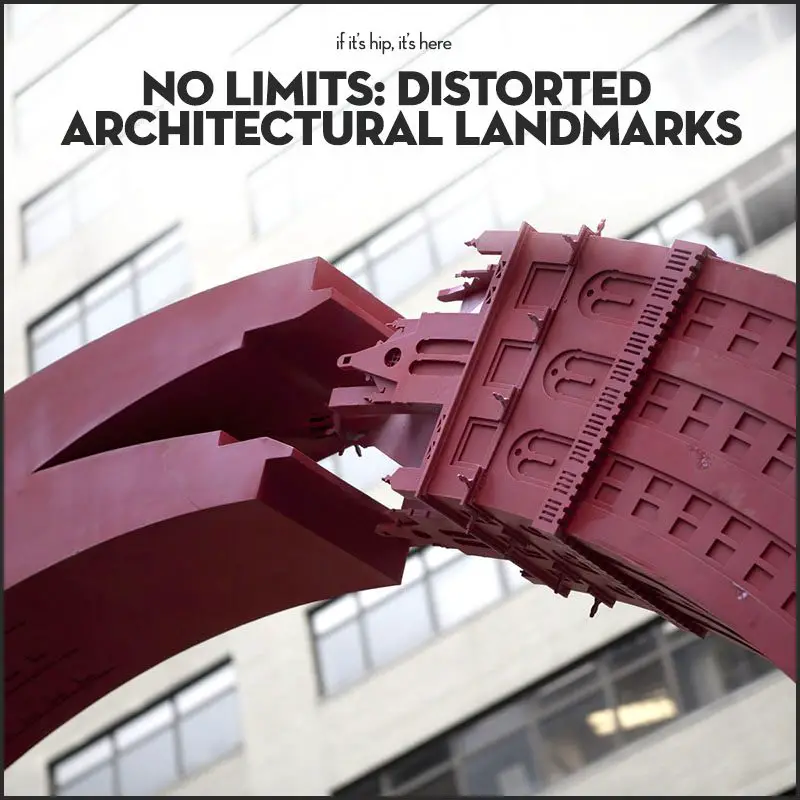In 2013, a series of ten large sculptures of steel and aluminum were installed on New York’s Park Avenue Malls by Cuban artist Alexandre Arrechea. The installations transformed and distorted several of the city’s architectural landmarks and monuments that when built represented the power of their patrons as well as the prowess of the architects.
No Limits: Alexandre Arrechea’s Distorted Architectural Landmarks
The project titled “No Limits” was also accompanied by the artist’s watercolors and smaller versions of the sculptures inspired by the project shown later in this post.
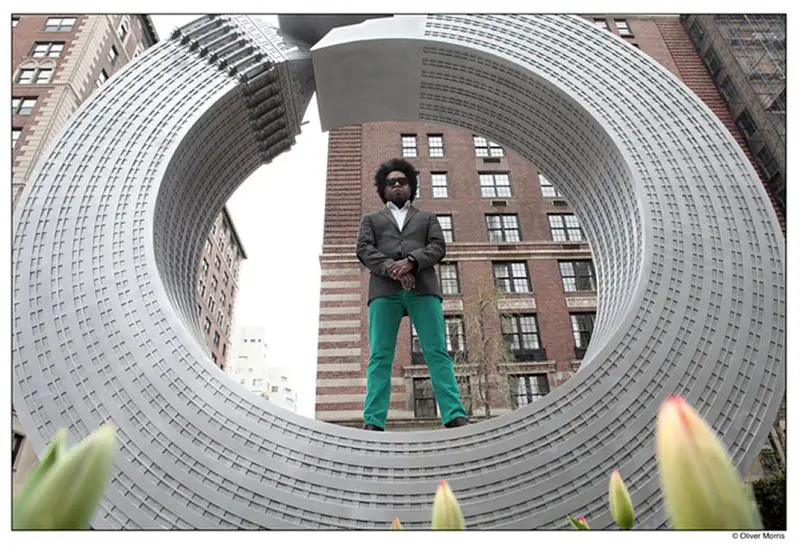
Altering and manipulating such recognizable icons as New York’s Chrysler Building and the Flatiron Building into malleable, sinuous silhouettes transforms our own perspective. The sculptures raise questions about the role of architecture and its relation to power and control.
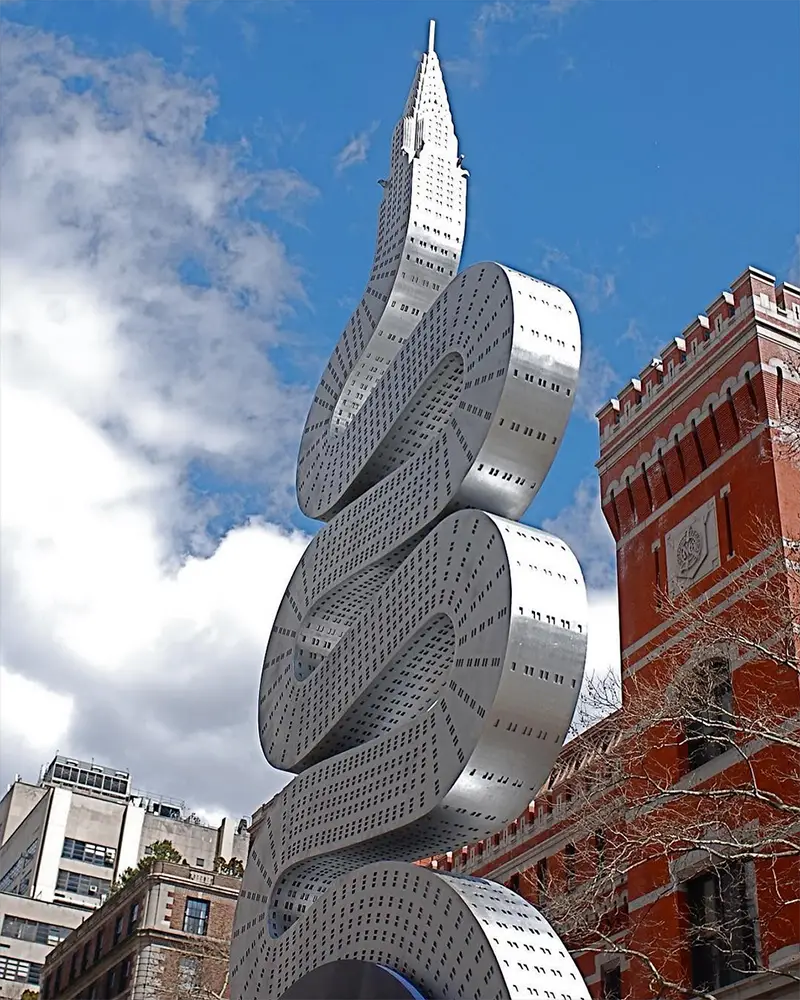
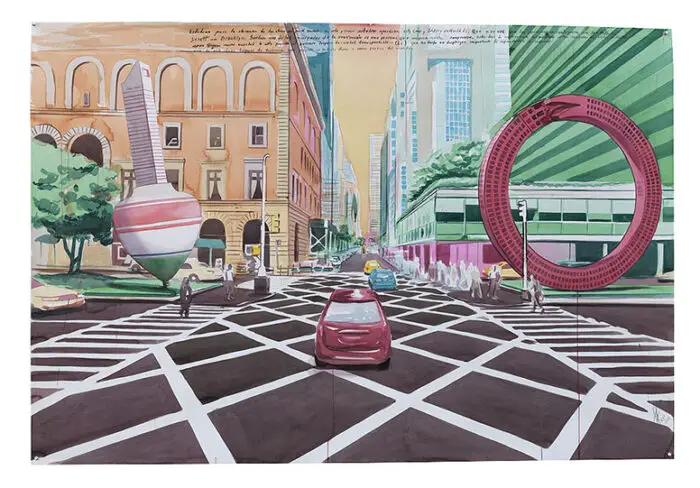

The sculptures, which appeared to roll, wind, and spin their way down Park Avenue from 53rd to 67th Street, reached towering heights of up to 20 feet. Below are images of each.
The Empire State Building, Fifth Avenue and 34th Street (Shreve, Lamb and Harmon), Materials · Stainless steel, Dimensions · 449.6 x 294.6 x 28.6 cm:
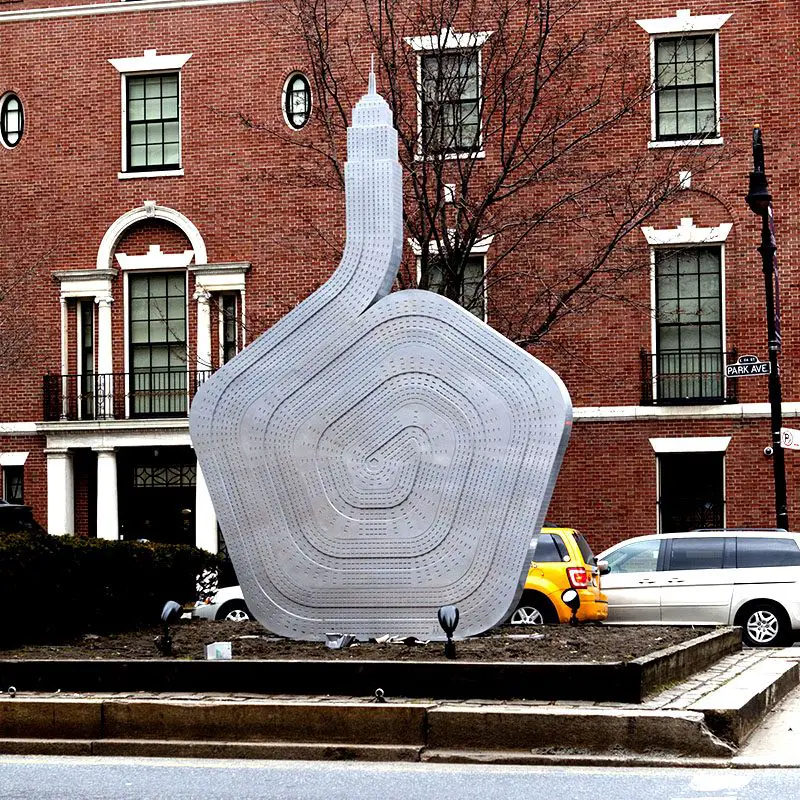
The Helmsley Building (built in 1929 as the New York Central Building and designed by Warren & Wetmore), Materials · Stainless steel, Dimensions · 449.6 x 441.3 x 80 cm:
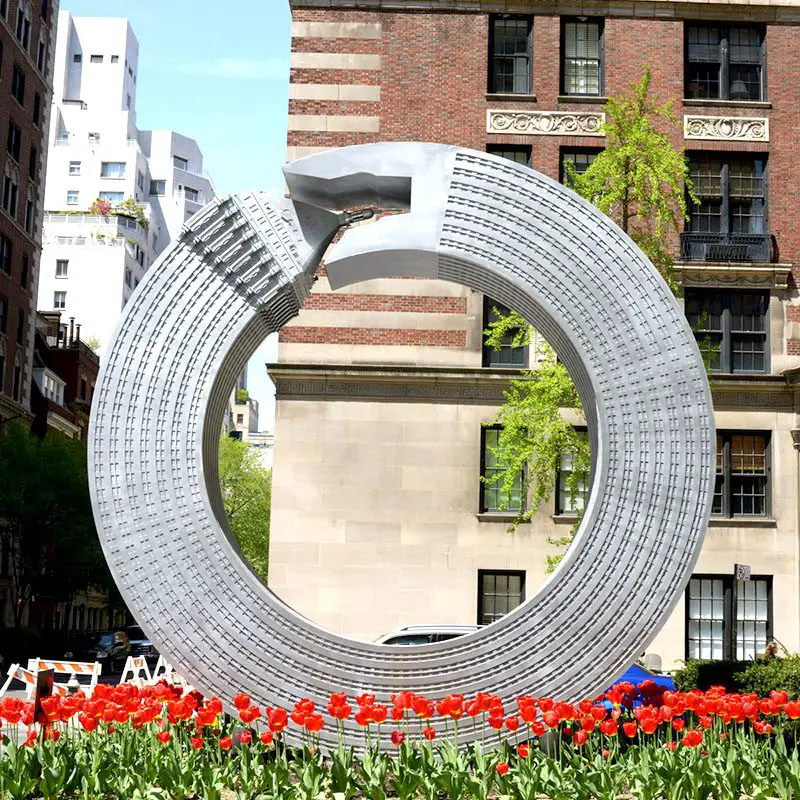
The Chrysler Building from Lexington and 42nd Street (designed by William Van Allen), Materials · Stainless steel, Dimensions · 452.1 x 194 x 27.3 cm:
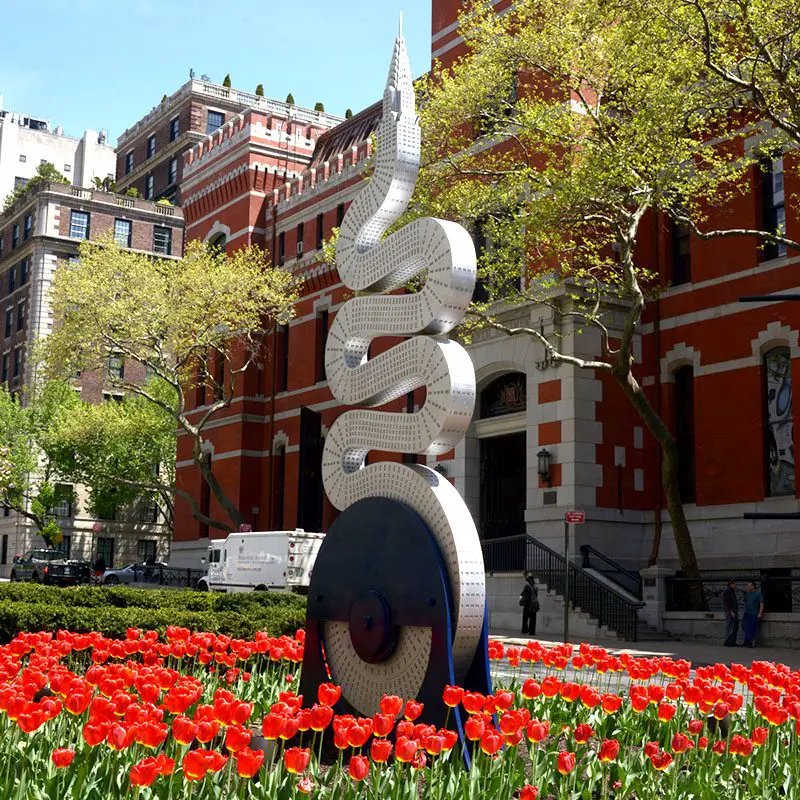
The MetLife Building (built in 1958-63 as the Pam Am Building, designed by Emery Roth & Sons, Pietro Belluschi and Walter Gropius), Materials · Stainless steel, steel, Dimensions · 400.1 x 383.2 x 67.3 cm:
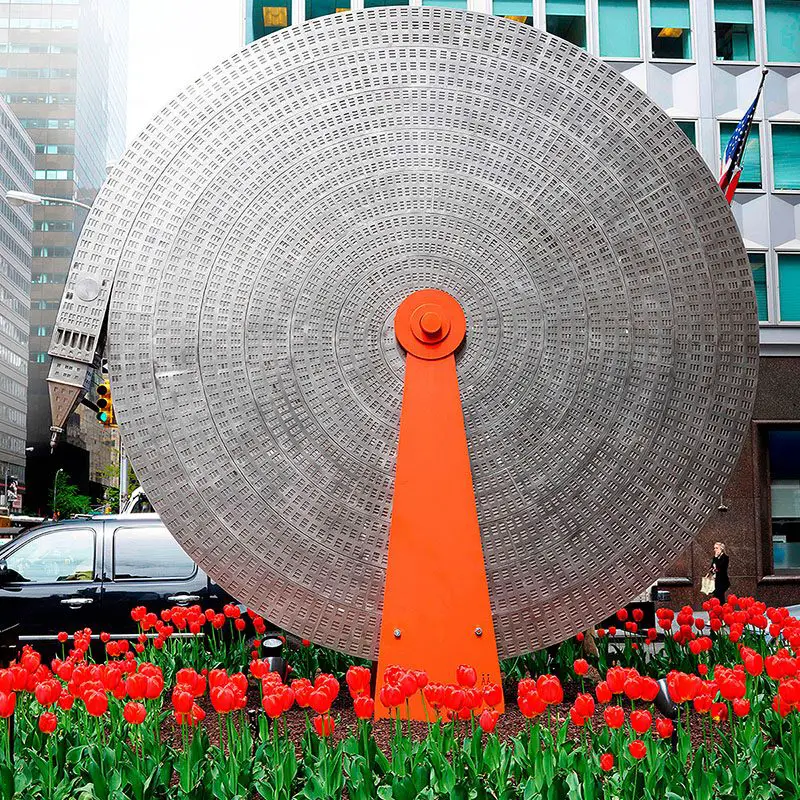
The Sherry Netherland Hotel from Fifth Avenue and 59th Street (designed by Schultze & Weaver with Buchman & Kahn), Materials · Stainless steel, Dimensions · 449.6 x 441.3 x 40 cm:
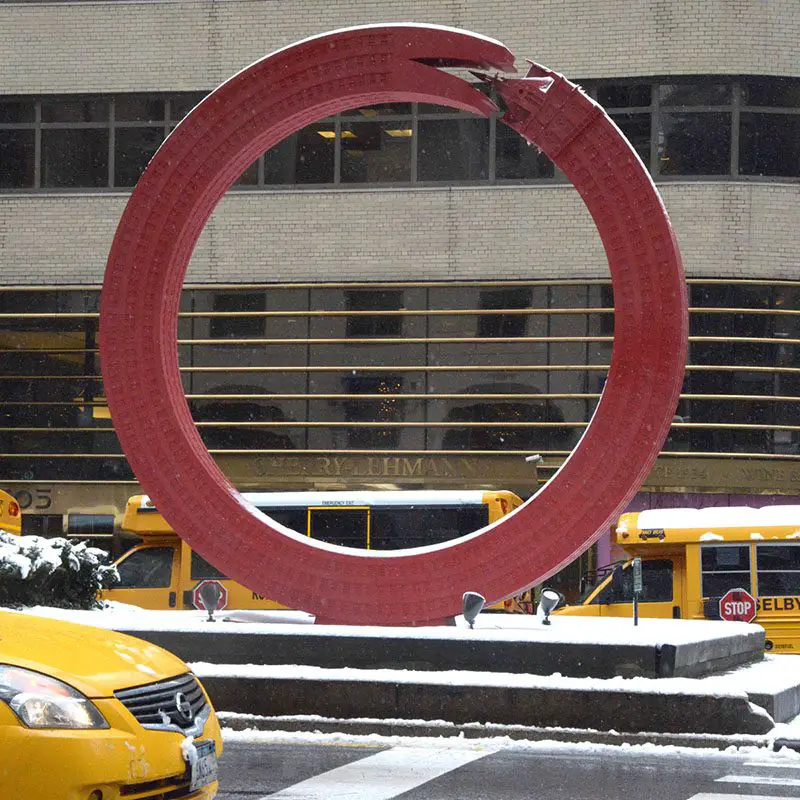
The MetLife insurance Tower, Madison Avenue and 23rd Street (Napoleon Le Brun & Sons), Materials · Foam, polyurethane, steel, Dimensions · 500.4 x 172.7 x 26.7 cm:
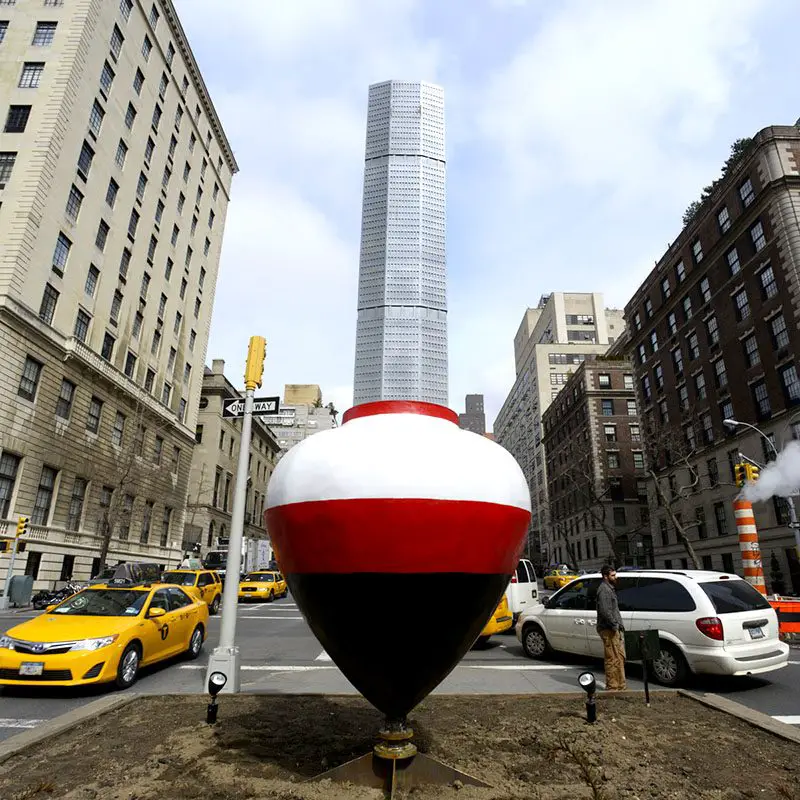
The Seagram Building (designed by Ludwig Mies van der Rohe and Philip Johnson), Materials · Steel, Dimensions · 600.1 x 287 x 102.9 cm:
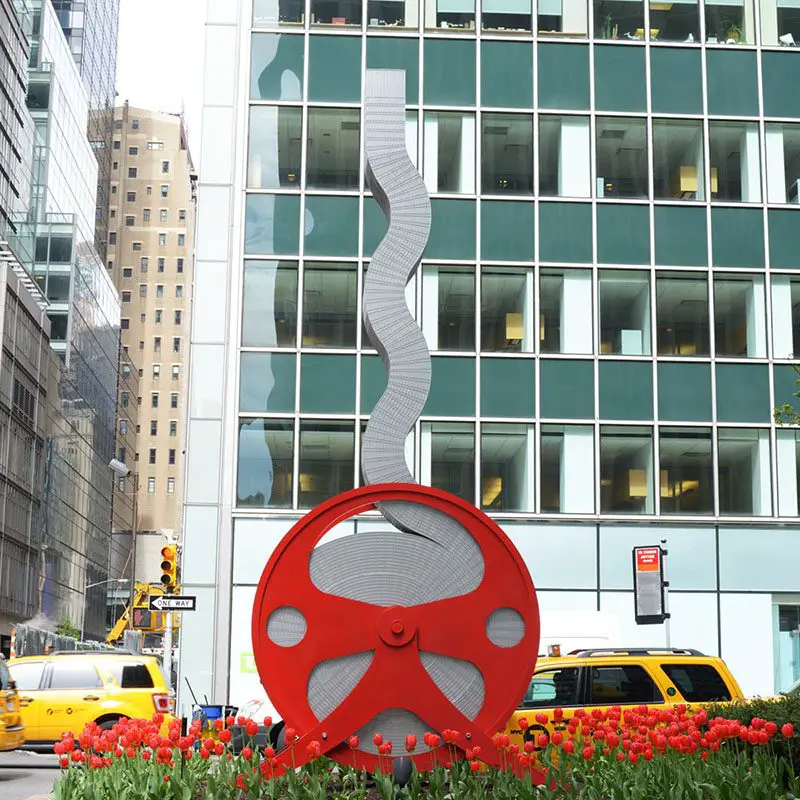
The Citigroup Center from Lexington Avenue and 53rd Street (designed by Hugh Stubbins, Jr.), Materials · Foam, polyurethane, steel, Dimensions · 500.4 x 172.7 x 52.1 cm. 433 Kg:

The United States Court House from Foley Square (Cass Gilbert), Materials · Aluminum, steel, Dimensions · 600.1 x 129.5 x 95.9 cm:
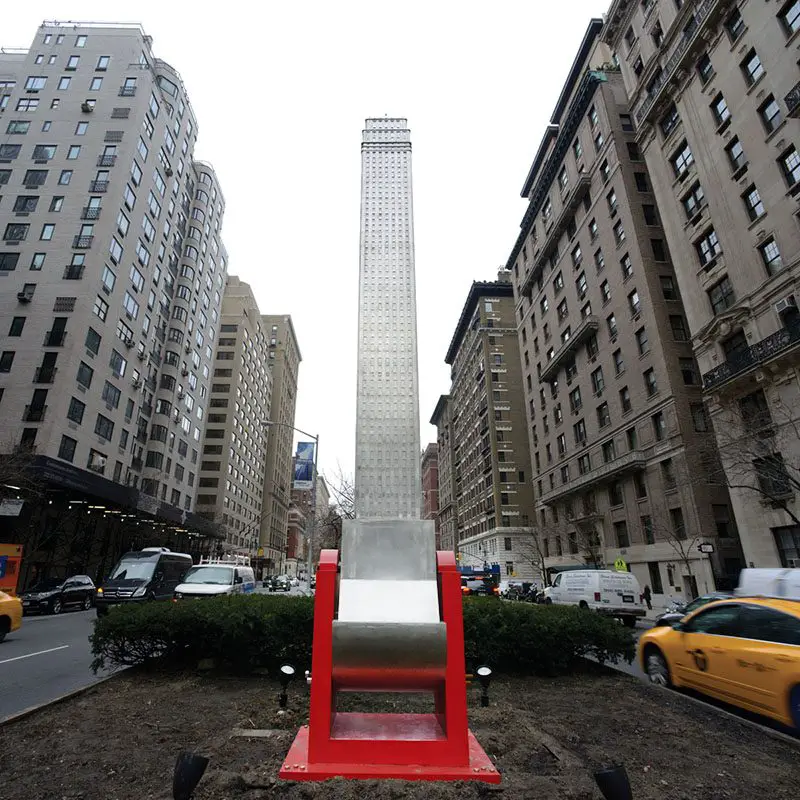
The Flatiron Building, originally the Fuller Building, at 175 Fifth Avenue (architects Daniel Burnham and Frederick P. Dinkelberg), Materials · Aluminum, Dimensions · 549.9 x 198.1 x 24.8 cm:
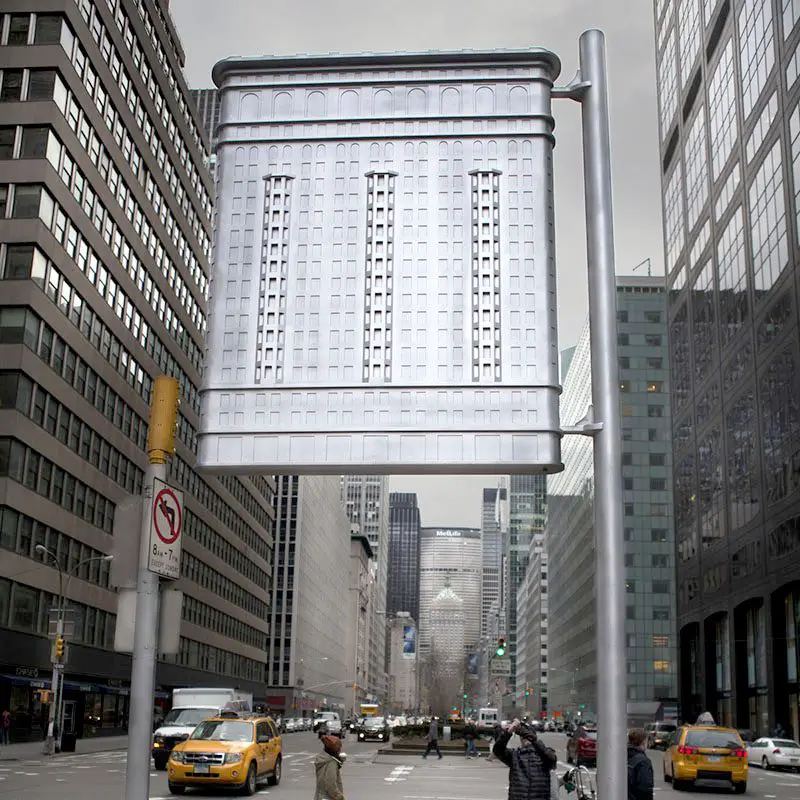
The gallery exhibition of the accompanying artist’s watercolors and smaller versions of the sculptures:
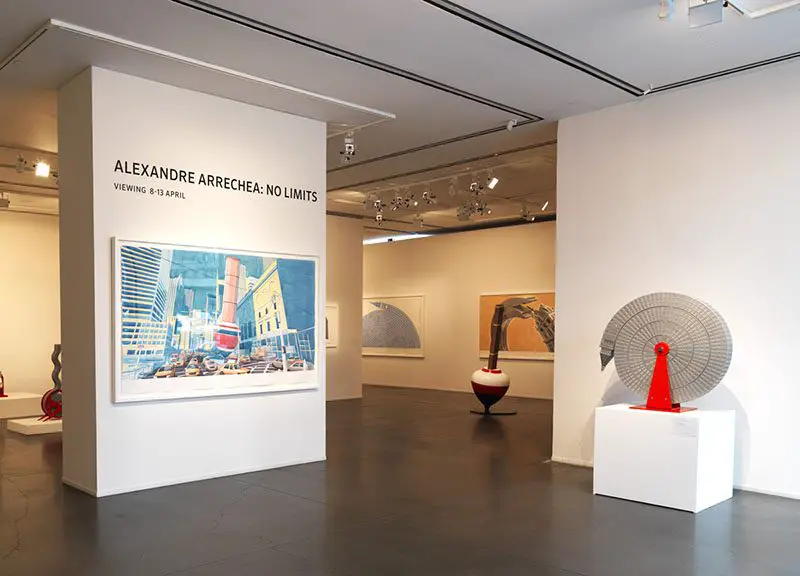
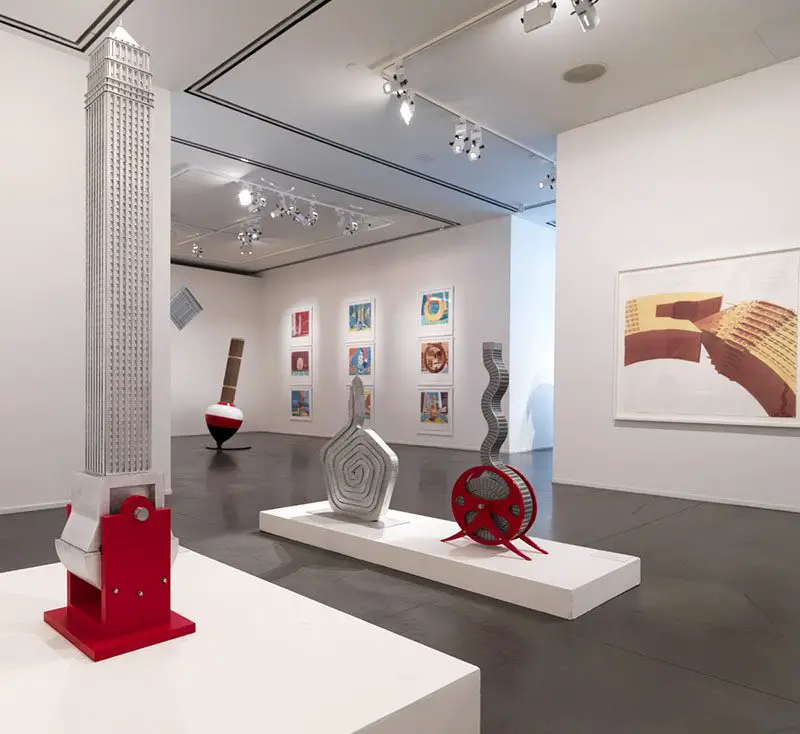
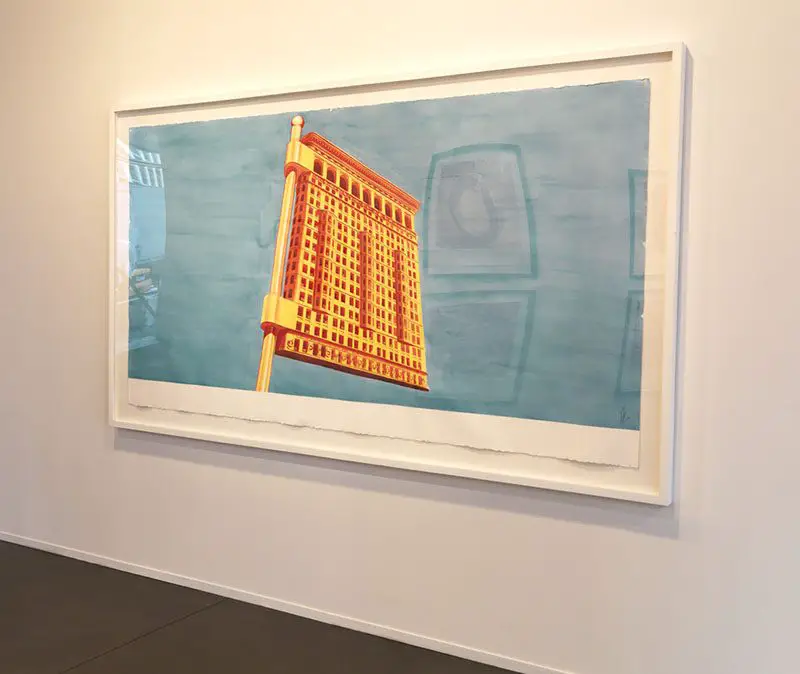
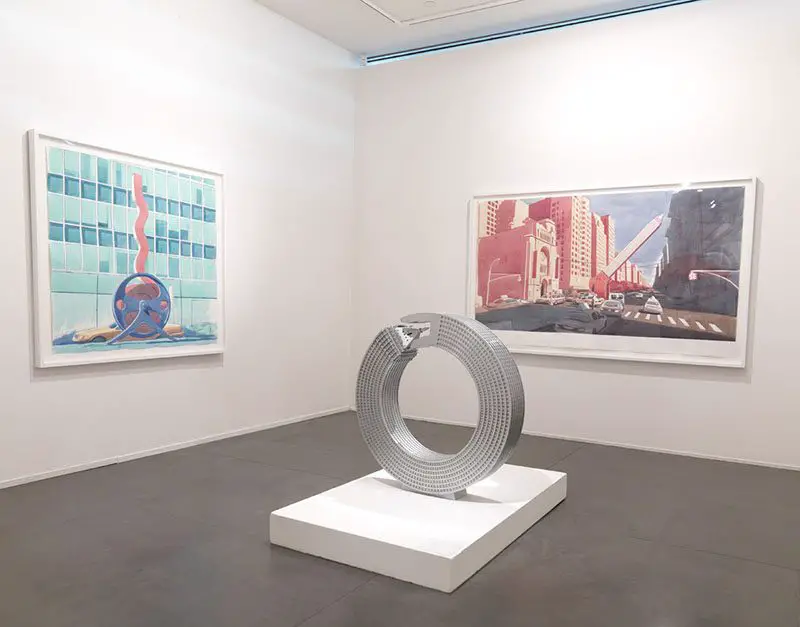
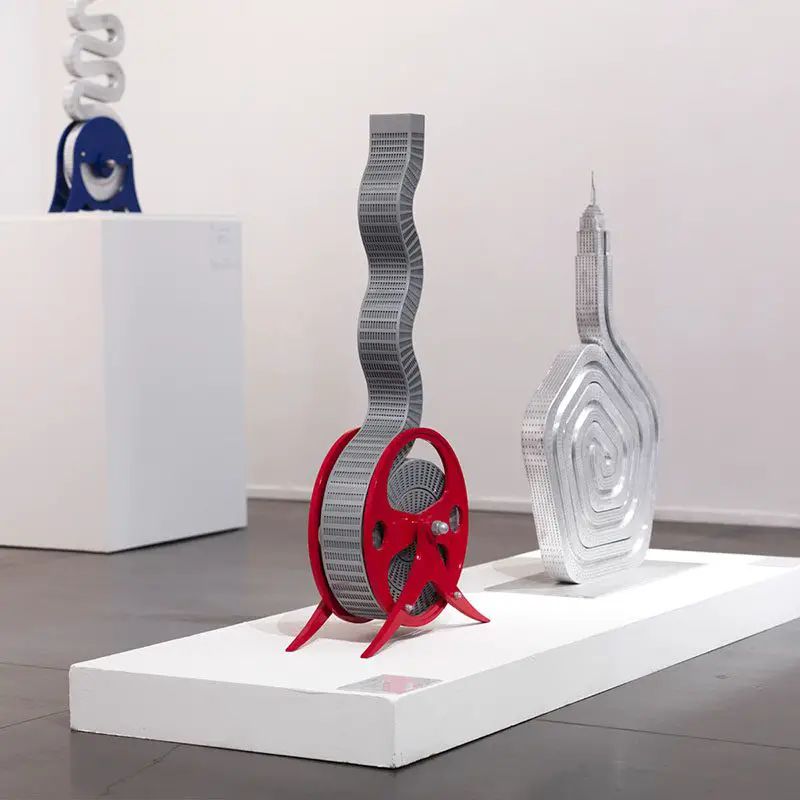
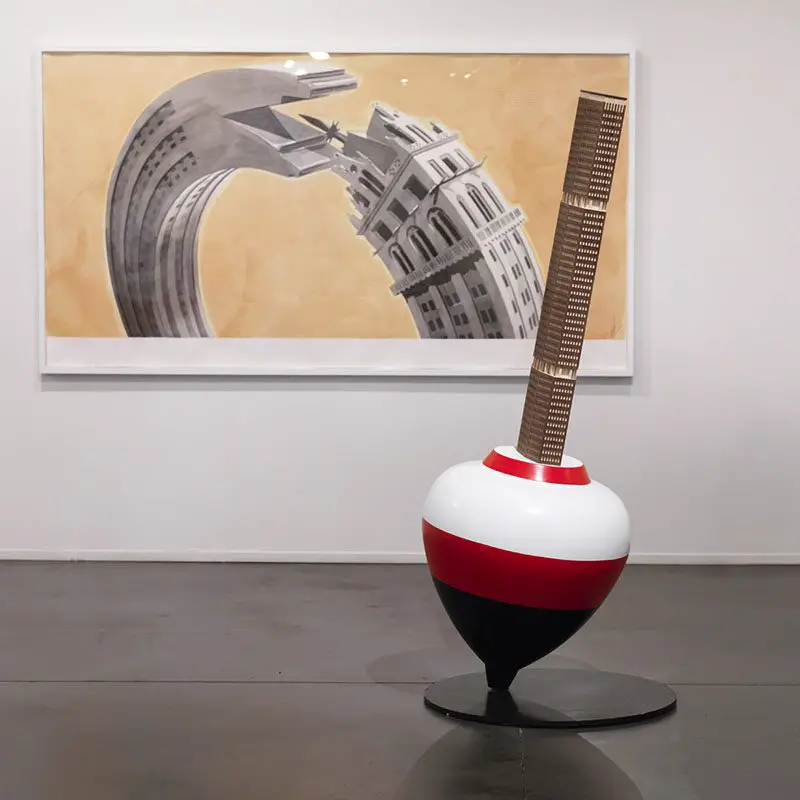
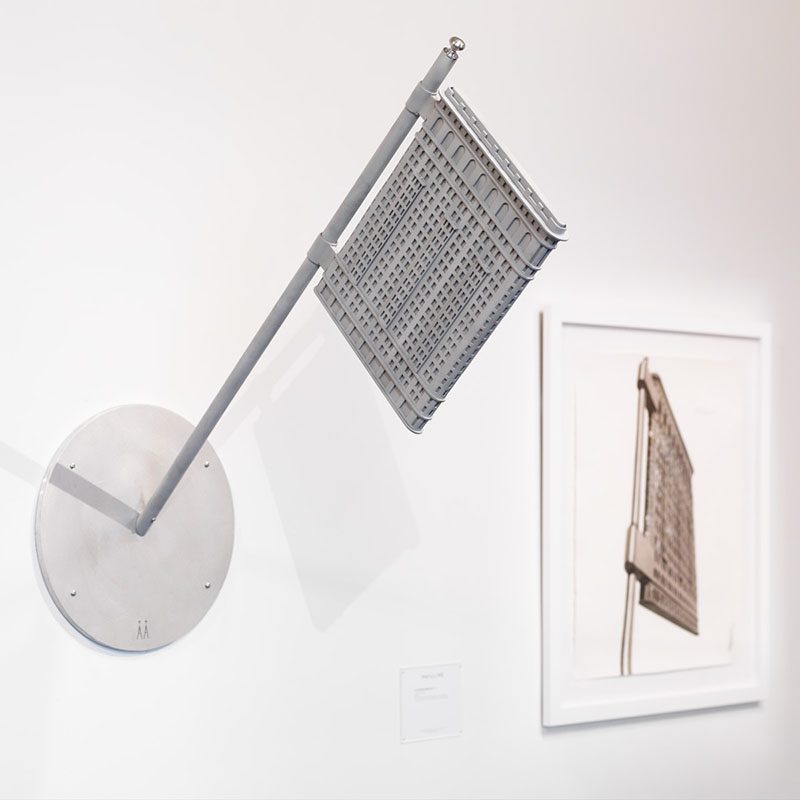

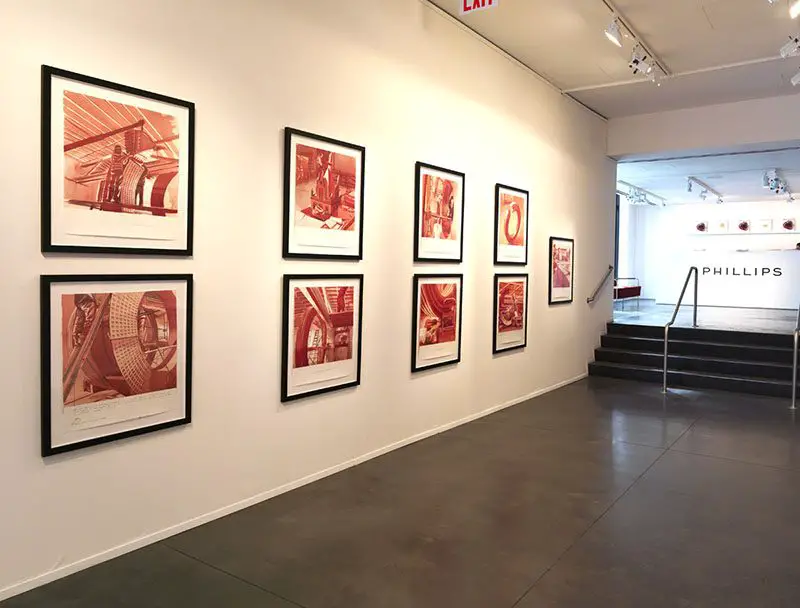
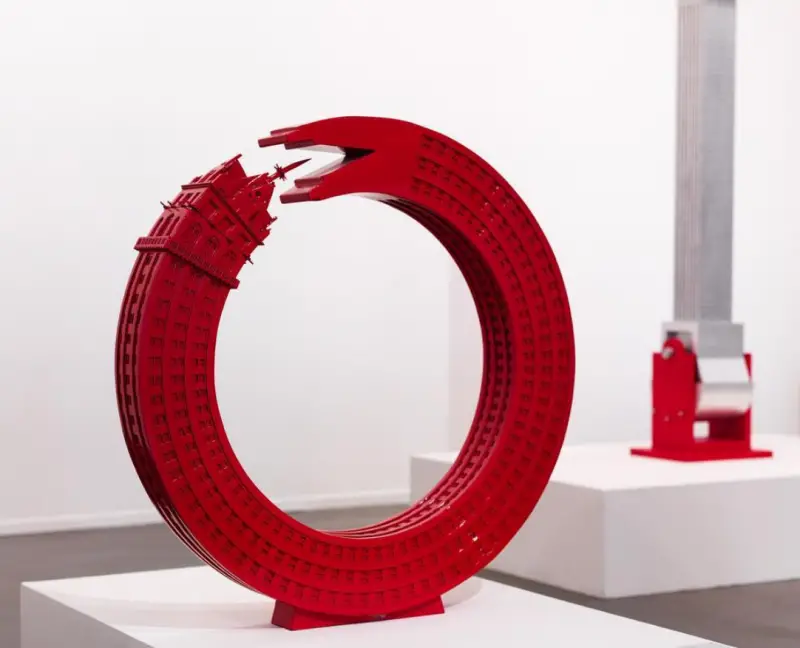
Art Critic Lowery Stokes Sims says of the artist’s work:
“The roots of his preoccupations are certainly the Cuba within which he grew up (he was born in 1970) which would give him a heightened sensitivity to the propaganda potential of even ordinary objects, to how symbols may be elevated beyond their intrinsic worth, and how we need to read between the lines in the messages we absorb every day. Architecture is an easy target for such modes of expression. Every society has used structures and sites, however permanent or ephemeral, to order, control and propagandize populations. The result is that public spaces and structures can assume almost mythic reputations that are a result of the activities that occurred within their walls. The Reichstag in Berlin, the so-called Tombs in New York City, the Pretoria Court House, the Tower of London, the Bastille: all of these buildings retain reputations as sites of oppression and suppression for the purpose of maintaining control. And there are also sites such as Plaza de la Revolución in Havana, which was the subject of a 2012 video installation (The Empty Plaza/ La Plaza Vacia) by Arrechea’s countryman artist Coco Fusco, which featured an extended meditation on the psychological and situational aura of the space as the site of “revolutionary promise, and memory.” (source)
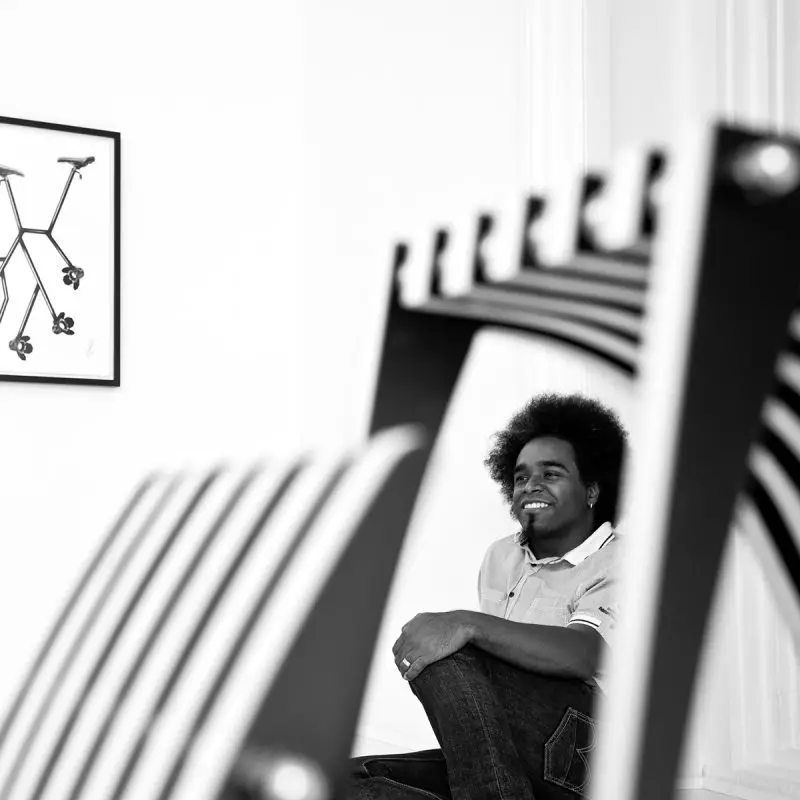
Alexandre Arrechea
Follow him on on Instagram at https://www.instagram.com/alexandrearrechea/
all images courtesy of the artist
